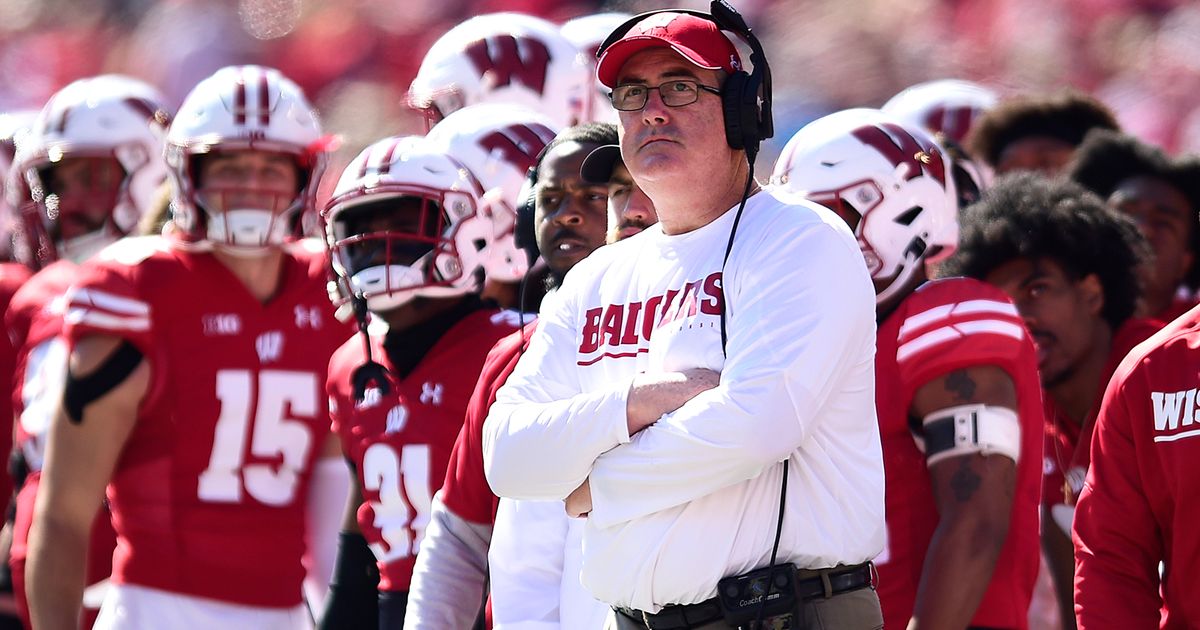
The move was shocking for its timing and memorable for its location.
Lane Kiffin was fired by Southern California on Sept. 29, 2013, just five games into the season, on the airport tarmac after the team plane returned home from Arizona State.
While not unprecedented, such an early coaching change was rare and a harbinger of sorts: Over the next eight seasons, eight more firings were made at the top level of college football before the midway point, including two last year. That pace has picked up dramatically this season.
Five coaches have been sacked before Week 6 — at least one every week since Sept. 11 when Nebraska dumped Scott Frost. Last Sunday, in an autumn first, there were two: Colorado parted ways with Karl Dorrell and Wisconsin dismissed Paul Chryst, who was 67-26 with three Big Ten championship game appearances in eight seasons.
That’s more than $57 million in buyout money for five coaches, just a sliver of the more than $500 million paid out to fired coaches over the past decade, according to public data reviewed by the Knight Commission on Intercollegiate Athletics.
“I think we live in the immediacy right now of things can’t wait until tomorrow or next week. They have to be done now,” said Jim Livengood, a retired longtime athletic director who now consults on coaching searches.
“It’s crazy,” he said. “I mean, it doesn’t make sense.”
Looser transfer rules that allow athletes to switch schools easier than ever before plus a shift in the primary signing period for high school football players to December from February has increased the number of in-season coaching changes.
An early move generally signals a lost season, but with so many games left the messaging in September and early October has to include trying to salvage what’s left.
“We still have confidence in this group that we can reach a lot of goals that we set,” said Wisconsin interim coach Jim Leonhard, who takes over a 2-3 team that could still be a factor in the wide-open Big Ten West. “We have confidence that we can get this thing turned in the right direction.”
Is that realistic?
“It feels like when you make changes like that, and I hate to lump everybody into one, but, man, what are you saying to your current team?” Texas coach Steve Sarkisian said. “Are we just looking ahead already, are we looking to the future? Or are we about this current team?”
Most of the teams that have fired coaches before the halfway mark have proceeded to trudge through losing seasons, from Kansas in 2014 after it dumped Charlie Weiss four games in to USC last year after cutting Clay Helton before Week 3.
There are exceptions: Kiffin’s 2013 Trojans wound up finishing 10-4. USC in 2015 finished 8-5 after letting Sarkisian go after five games. LSU in 2016 finished 8-4 after Les Miles was let go following a 2-2 start. The interim coaches for two of those teams, Helton for USC in 2015 and Ed Orgeron for LSU, were later hired for the full-time gig after stabilizing the programs.
Still, there is only so much positive change that comes with an interim coach.
“It’s not like there’s going to be dramatic changes in style of play or scheme or any of those kinds of things,” said Todd Berry, a former Division I head coach and the executive director of the American Football Coaches Association. “I don’t know that the football team benefits from it. I don’t know if the players benefit from it.”
Just last season, college football’s coaching carousel was sped up like never before as October firings became all the rage. Eight coaches were let go before Nov. 1. This year, five were gone before Oct. 3.
What’s the rush?
“I think the main reason behind this is the transfer portal,” Berry said.
An early coaching change can expedite the hiring of a replacement, who can start stabilizing a roster and stemming a possible mass exodus of players.
Texas Tech, for example, was able to hire Joey McGuire last November just a couple weeks after firing Matt Wells. Georgia Southern fired Chad Lunsford after a 1-3 start in September and hired Helton on Nov. 2. But the ability to hire a new head coach in October is close to nonexistent.
Putting Wisconsin aside, what has happened so far this season seemed to be a collision of opposing ideas.
Frost at Nebraska, Herm Edwards at Arizona State and Geoff Collins at Georgia Tech all came into this season in precarious positions. Each of those schools decided last year to show a level of uncommon patience for major college football these days — then quickly pivoted when there were no immediate signs of improvement this season.
“In many cases, it wasn’t a question of whether if it was going to be done,” Livengood said. “It was: Should it be right now?”
___
AP Sports Writers Steve Megargee in Milwaukee and Jim Vertuno in Austin, Texas, contributed.
___
Follow Ralph D. Russo at https://twitter.com/ralphDrussoAP and listen at http://www.appodcasts.com
___
More AP college football: https://apnews.com/hub/college-football and https://twitter.com/AP_Top25. Sign up for the AP’s college football newsletter: https://bit.ly/3pqZVaF